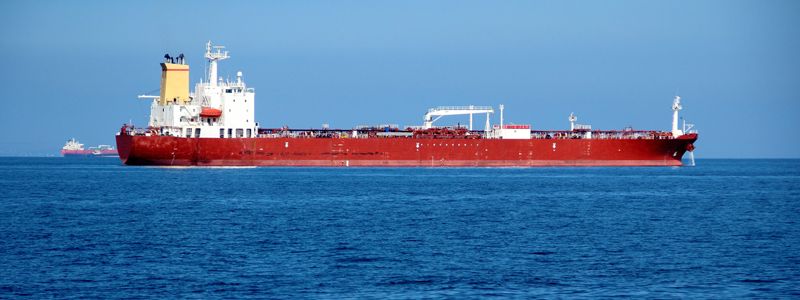Loss prevention

Photo: Tanker at sea (Credit to Komisar)
A substantial quantity of water was found in crude oil having been loaded at Angolan terminals. As the cargo documents did not reflect the water content found in the Far East discharge ports, the receivers made substantial shortage claims against the owners.
What had happened?
The vessel had loaded two different cargoes of crude.
The first parcel, consisting of Mondo Blend Crude Oil, was loaded mid October 2017. Apart from traces, no free water was detected upon loading following gauging with water finder paste.
The second parcel, being Cabinda Crude Oil, was loaded nine days later. The On Board Quantity was minimal at 45 bbls with zero free water having been found. However, upon completion of loading 1,038 bbls of free water were detected through tank gauging with water finder paste. This amount would have been within the range stated in the Certificate of Quality. However, the vessel's Master issued a Letter of Protest, whereby he warned that more water may be found during the voyage. In any event, following from ship Total Calculated Volume and shore Gross Standard Volume, this water was loaded with the cargo.
Thereafter the vessel sailed to her first Chinese port for discharging the Cabinda Crude. During the voyage regular water dips were taken by the crew, showing the amount of free water having settled in the cargo tanks carrying Cabinda Crude to have increased drastically up to 6,703 bbls.
Subsequently, the vessel arrived at her first discharge port end of November 2017. Prior to discharging, during the joint ullage survey, gauging with water paste revealed only 1,166 bbls of free water.
Nonetheless, after completion of discharge a measurement survey was carried out in the respective shore tanks and it revealed an amount of 29,948 bbls of free water.
Thereafter the vessel proceeded to her second Chinese discharge port where she arrived in the beginning of December 2017 to discharge the Mondo Blend parcel. Once again, before discharging, a joint ullage survey was carried out whereby gauging was performed with water finder paste, showing no reaction. Against the back-drop of the massive amounts of water found in the first discharge port, the parties decided to use a closed type portable water interface detector (so called 'UTI') to verify the gauging result. The instrument detected 10,346 bbls of free water having settled underneath the Mondo Blend.
Consequentially, the receivers made substantial claims for net outturn cargo shortages in both discharge ports against the vessel.
What can be learnt from this?
Naturally, all crude cargoes contain certain amounts of water, but its quantity is difficult to ascertain due to settling times upon completion of loading. Accordingly, in our case, the free water increase was certainly caused by the fact that the cargo could retain free water in suspension for a longer period making it impossible to be detected shortly after loading.
The Association was advised that the gauging methods being applied, particularly the use of water finder paste, in this case lead to different physical findings, as opposed to the use of an 'UTI'.
What can be done to avoid resulting claims?
If ballast is to be discharged at the load port simultaneously to loading, it is recommended to ensure that representative samples of each type of ballast to be discharged are taken and sealed by cargo inspectors[1].
In case free water is found upon loading, lodging a Letter of Protest is of course essential in any event, regardless of the content provided by the Certificate of Quality.
However, once confronted with a claim for net outturn cargo shortage due to excessive free water, it is crucial to be able to adduce evidence showing the origin of the free water to be shore based.
Therefore, it is important to have samples retained of all free water having been found at different stages. In addition, top, middle and bottom or running samples should also be drawn from each tank enabling to ascertain what water was retained in suspension[2].
[1] The Nautical Institute, MARS Report 201019.
[2] The Nautical Institute, MARS Report 201019.